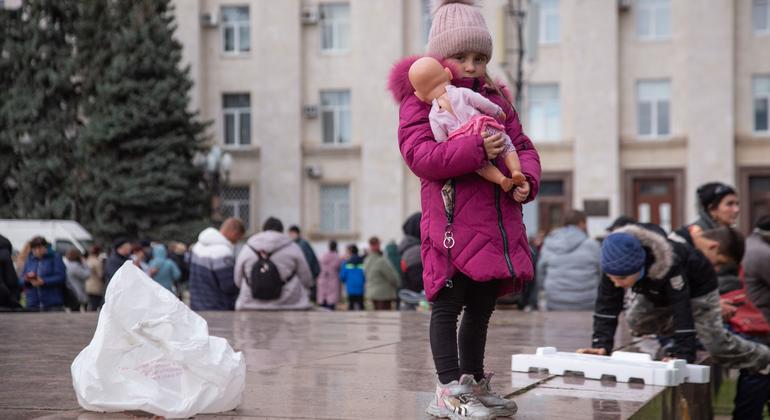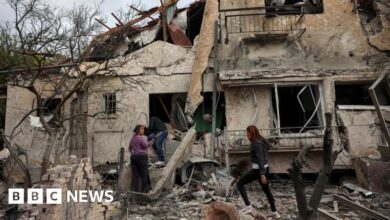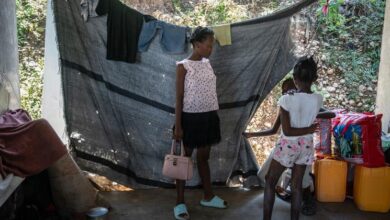Ukraine: Top UN aid official condemns deadly attack on market in Kherson

Matthias Schmale said: “Once again, another unpredictable attack by the Russian Armed Forces killed and injured civilians, this time at the beginning of their day in a busy city market Kherson, southern Ukraine”. a statement.
According to media, at least 5 people were killed and others injured.
The market and a public transportation stop were also damaged, Schmale said.
Stop attacking civilians
He noted that since the beginning of Russia’s full-scale invasion of Ukraine on February 24, 2022, “thousands of people who go about their daily lives in markets, schools and hospitals have never returned home due to the effects of war”.
He emphasized that “Attacks on civilians and civilian infrastructure are prohibited under international humanitarian law and must stop.”
Casualties increased sharply
Relatedly, civilian casualties and damage to civilian infrastructure in Ukraine “increased significantly” between June and August this yearUnited Nations human rights office, OHCHRsaid therein Latest report on the country.
“With 589 civilians killed and 2,685 injured due to conflict-related violence between 1 June and 31 August 2024, the number of civilian casualties during this reporting period was 45% higher than the previous three-month period. July 2024 is the most dangerous month for civilians in Ukraine since October 2022,” the report said.
the the deadliest day was July 8, when at least 43 civilians were killed in a large-scale coordinated missile attack“with dozens of missiles launched by the Russian Federation against targets across Ukraine”.

People take shelter from a missile attack at a metro station in the Ukrainian capital Kyiv.
Use explosive weapons
Most civilian casualties, 98%, were caused by the use of explosive weapons with wide-area effects in populated areas. The majority, 89%, occurred on territory controlled by the Government of Ukraine and 11% in areas occupied by Russia. Older people, especially women, are more affected.
Russia also continued to target critical energy infrastructure during the reporting period, affecting essential services and raising concerns, especially as winter approaches.
Kursk invasion
OHCHR also noted that Ukraine’s incursion into Russia’s Kursk region on August 6 was “a significant development” during the reporting period.
Spokeswoman Liz Throssell said: “While we have identified a number of civilians who were killed and injured in connection with this intrusion, we have not been able to determine the exact number of casualties. lack of accessibility and limited public information”. speak journalist in Geneva.
She said that in August, OHCHR asked Russia to facilitate access for these purposes, “but to date, this has not been approved.”
Casualties continued to increase
The United Nations Human Rights Monitoring Mission in Ukraine (HRMMU) confirmed that as of August 31, 11,743 civilians had been killed and 24,614 injured since the conflict began.
As the trend continued into September, civilian casualties that month tended to be as high as August, the report said.
Strong military efforts by Russian forces forced Ukrainian authorities to evacuate thousands of people from areas near the front lines.
Meanwhile, attacks on cities across Ukraine – such as Sumy, Kharkiv and Zaporizhzhia – damaged and destroyed civilian property and infrastructure, including schools, hospitals and even nursing homes. Further attacks against Ukraine’s energy infrastructure have also occurred.
Prisoners of war
The report also addresses the treatment of prisoners of war (POW), based on hundreds of interviews. They said Ukrainian prisoners of war were subjected to widespread and systematic torture and ill-treatment at the hands of Russian authorities.
HRMMU Director Daniel Bell said: “They described severe beatings, electric shocks, choking, electrocution, prolonged stress positions, sleep deprivation, dog bites, mock executions, sensory deprivation, intimidation, degrading treatment and humiliation. 68% said they had experienced sexual violence. speaking from the Ukrainian capital Kyiv.
The report said a series of factors indicated that supervisors at detention facilities were aware of this treatment and had the ability to prevent it, while some public figures in Russia encouraged it. clearly inhumane treatment, and even killing of Ukrainian prisoners of war.”often use dehumanizing terms in public discourse and through state media”.
Meanwhile, Russian prisoners of war were tortured or otherwise mistreated by Ukrainian forces during their first period of captivity, according to the report. This includes severe beatings, death threats and physical violence, and to a lesser extent electric shock.
“However, in most cases, torture and ill-treatment end when prisoners reach official detention, where conditions are generally consistent with international standards,” the organization said.
The United Nations High Commissioner for Human Rights, Volker Türk, will formally present the report to the United Nations Human Rights Council in Geneva on October 8.




